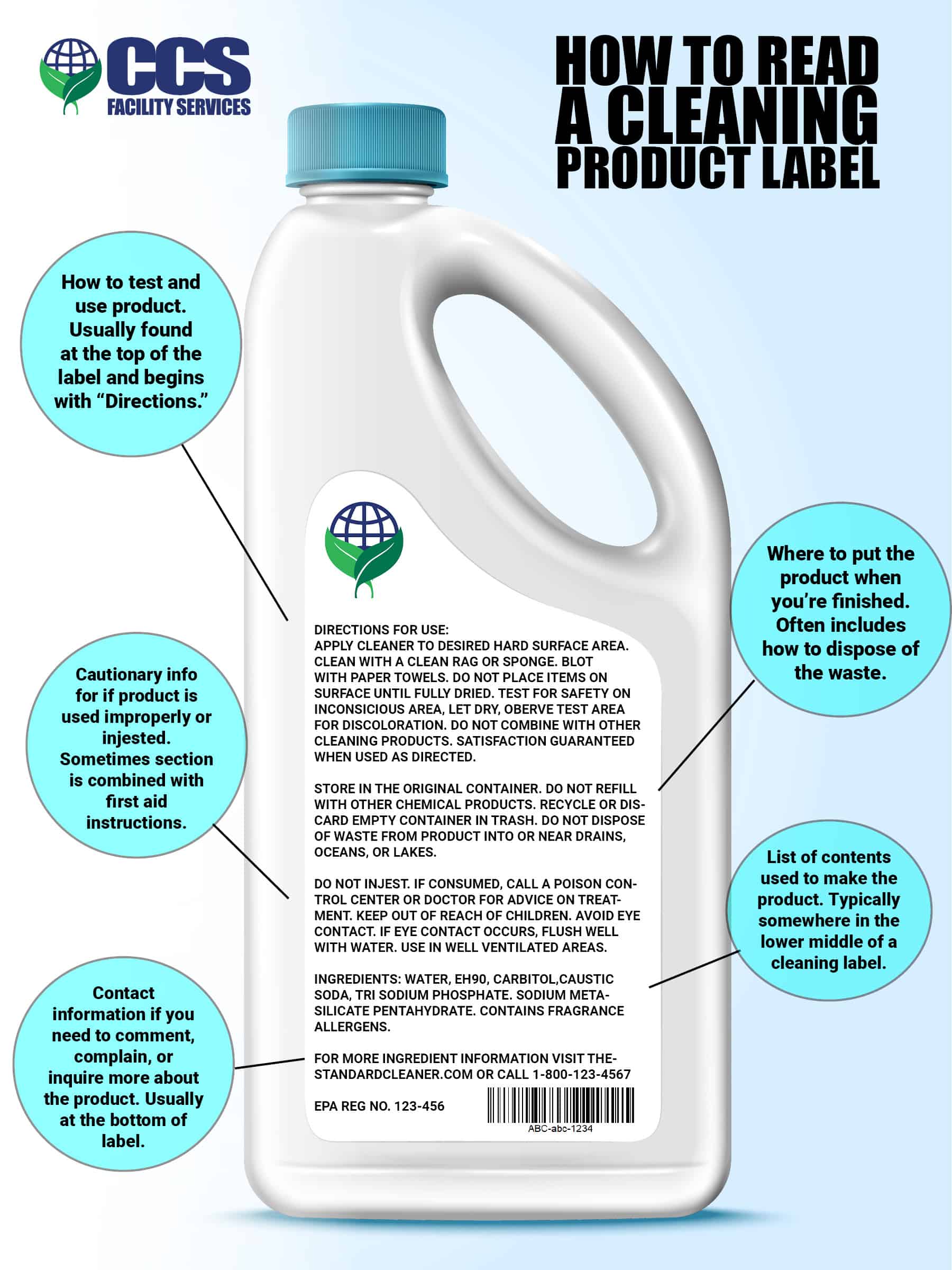However, cleaning products can be dangerous and hazardous to a person’s health if not used as specified on the label. OSHA (Occupational Safety and Health Administration) notes that “mixing cleaning products that contain bleach and ammonia can cause severe lung damage or death,” which underscores the importance of following product use instructions to the letter.
Usage and safety instructions printed on a product often are dense and packed with industry terminology. Using guidance provided by industry leaders such as OSHA and the EPA (Environmental Protection Agency), CCS Facility Services has “decoded” the key sections on a label to explain their purpose and how to read the instructions for the most effective usage.
Labels often contain lots of small text packed with valuable information. Often, the elements of a label are separated by either bolded text or small paragraph breaks. With information from the American Cleaning Institute, here are sections to look for and words that are commonly found:
1. Directions – Explanation of how to use the product safely and efficiently, usually through a step-by-step process.
2. Ingredients – Elements used to create the product. Depending on the product used, it may contain both active and inert substances. Active ingredients contribute directly to the purpose of the product, where inert (also known as “other”) ingredients play a secondary role that is not required for product efficacy.
3. Storage – Recommendations on where and/or how to safely store the product. Often this section is located where it reads “keep out of reach of children.”
4. Disposal – Advises how and where to dispose of a product once it is empty. This section is not always included or may be combined with another section.
5. Caution – Indicates potential dangers if product is used improperly, such as if ingested or mixed with other chemicals.
6. First Aid – Provides details on immediate emergency procedures to undertake if product is used improperly. Bring the product with you if seeking medical assistance from a doctor and/or poison control.
7. Contact – Usually includes the phone number, email address, mailing address, and/or website of the manufacturer to contact with questions/comments.

Understanding a label is important for many reasons. For example, when choosing what products to purchase, reading the label ahead of time can direct buying decisions based on the type of area being cleaned, the scope of occupants in a space, and/or the desired cleaning outcomes. Knowing where to find first aid information is imperative if the product is misused. With so much information on one small label, knowing what you are looking for in a product will save time, money, and effort overall.
On some occasions, a cleaning product may not have any label at all because laws vary from state to state on how to properly display product use instructions.
Understanding product labels is a key step in effective and safe use of cleaning products. Hiring the right commercial cleaners means avoiding the risk of improper product use. CCS Facility Services’ team of janitorial professionals delivers years of commercial cleaning experience and product knowledge. Visit our website to learn more about our janitorial expertise.



